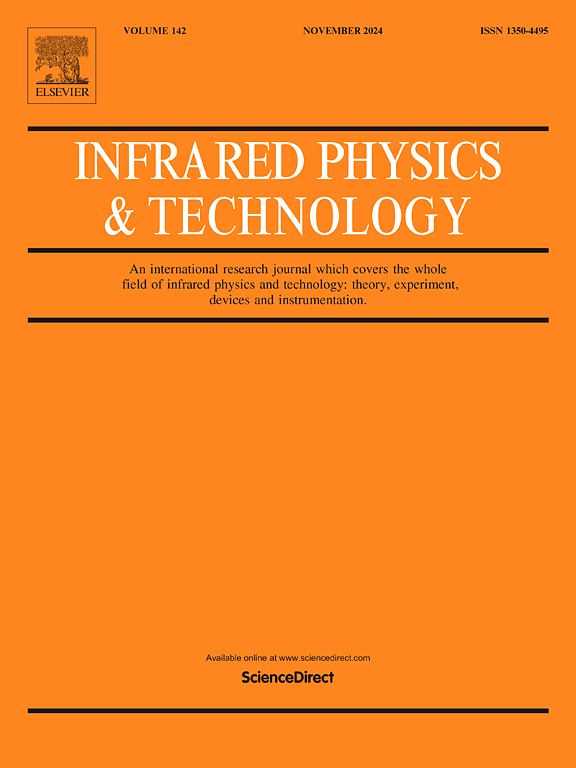Influence of As flux on the micro-structures and dark current of InAs/InAsSb superlattice-based infrared detectors
IF 3.1
3区 物理与天体物理
Q2 INSTRUMENTS & INSTRUMENTATION
引用次数: 0
Abstract
In this work, we present a study on the influence of As/In flux ratio during the molecular beam epitaxy growth on the material quality and thus dark current density of the InAs/InAsSb superlattice-based mid-wave infrared detectors. It was observed that a proper As/In flux ratio is essential to achieving higher material quality and thus lower dark current density for InAs/InAsSb superlattice-based detectors. It is also found that a smaller pixel size, a lower reverse bias and a lower operating temperature are essential for achieving a lower dark current density. The dark current of the InAs/InAsSb superlattice detectors grown with an optimized As/In ratio (e.g. 10 in this work) is dominated by diffusion current for the temperature range of 150–270 K, and tunneling current for the temperature range of 90–150 K. The absence of defect-related Shockley-Read-Hall dark current mechanism results in the ultra-low dark current density (2.53 × 10−6 A/cm2) and excellent device performance observed at 150 K in terms of a responsivity of 1.71 A/W, and a detectivity of 8.22 × 1011 cm·Hz1/2/W. Such excellent detector performance at 150 K suggests their great potential for high performance sensing and imaging applications at 150 K.
As通量对InAs/InAsSb超晶格红外探测器微结构和暗电流的影响
本文研究了分子束外延生长过程中As/In通量比对InAs/InAsSb超晶格中波红外探测器材料质量和暗电流密度的影响。研究发现,对于InAs/InAsSb超晶格探测器来说,适当的As/In通量比对于获得更高的材料质量和更低的暗电流密度至关重要。研究还发现,较小的像素尺寸、较低的反向偏置和较低的工作温度对于实现较低的暗电流密度至关重要。在优化As/In比(如10)下生长的InAs/InAsSb超晶格探测器的暗电流主要由150-270 K温度范围内的扩散电流和90-150 K温度范围内的隧道电流主导。由于没有缺陷相关的肖克利-里德-霍尔暗电流机制,器件的暗电流密度极低(2.53 × 10−6 A/cm2),在150 K时的响应率为1.71 A/W,探测率为8.22 × 1011 cm·Hz1/2/W,具有优异的性能。在150k下如此优异的探测器性能表明它们在150k下的高性能传感和成像应用中具有巨大的潜力。
本文章由计算机程序翻译,如有差异,请以英文原文为准。
求助全文
约1分钟内获得全文
求助全文
来源期刊
CiteScore
5.70
自引率
12.10%
发文量
400
审稿时长
67 days
期刊介绍:
The Journal covers the entire field of infrared physics and technology: theory, experiment, application, devices and instrumentation. Infrared'' is defined as covering the near, mid and far infrared (terahertz) regions from 0.75um (750nm) to 1mm (300GHz.) Submissions in the 300GHz to 100GHz region may be accepted at the editors discretion if their content is relevant to shorter wavelengths. Submissions must be primarily concerned with and directly relevant to this spectral region.
Its core topics can be summarized as the generation, propagation and detection, of infrared radiation; the associated optics, materials and devices; and its use in all fields of science, industry, engineering and medicine.
Infrared techniques occur in many different fields, notably spectroscopy and interferometry; material characterization and processing; atmospheric physics, astronomy and space research. Scientific aspects include lasers, quantum optics, quantum electronics, image processing and semiconductor physics. Some important applications are medical diagnostics and treatment, industrial inspection and environmental monitoring.

 求助内容:
求助内容: 应助结果提醒方式:
应助结果提醒方式:


